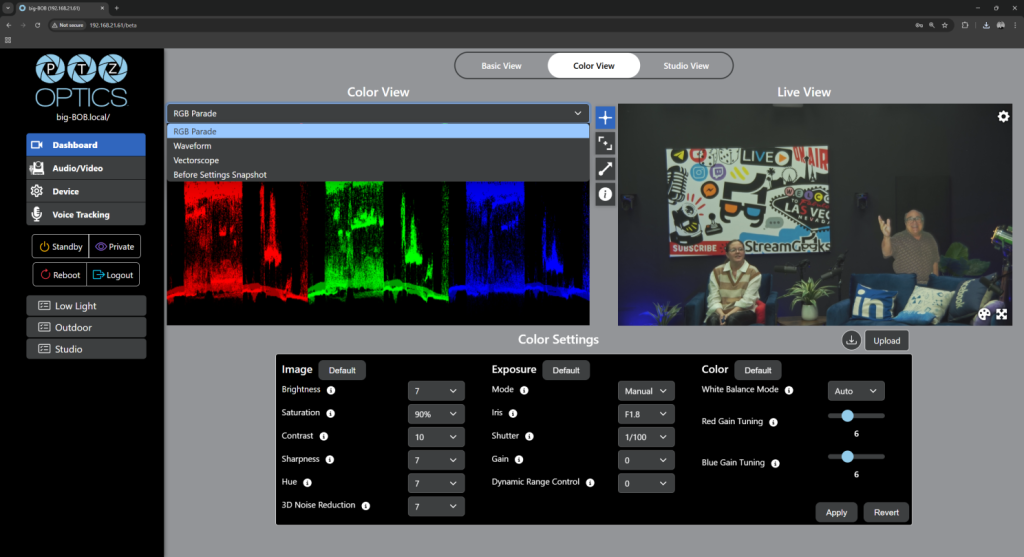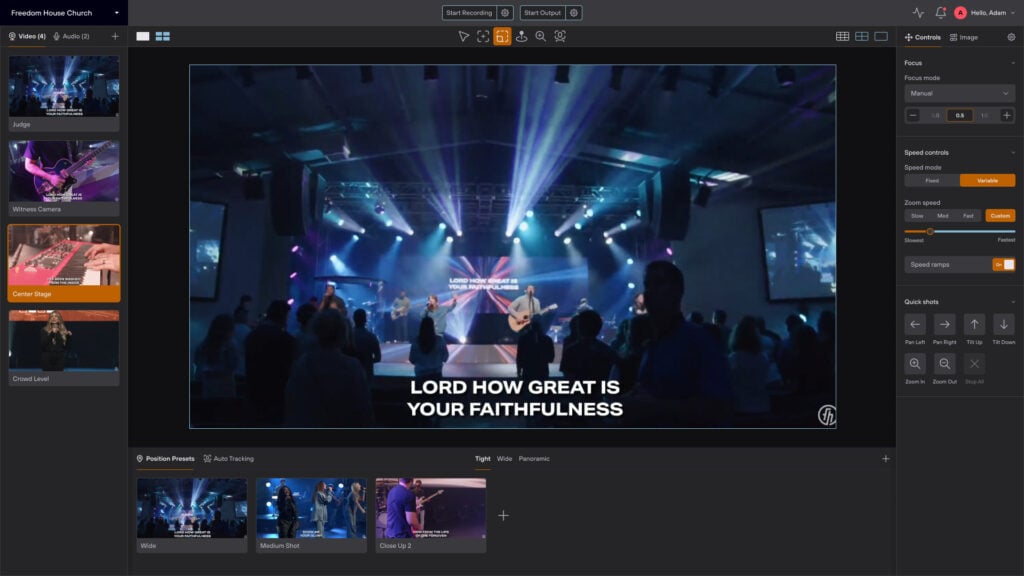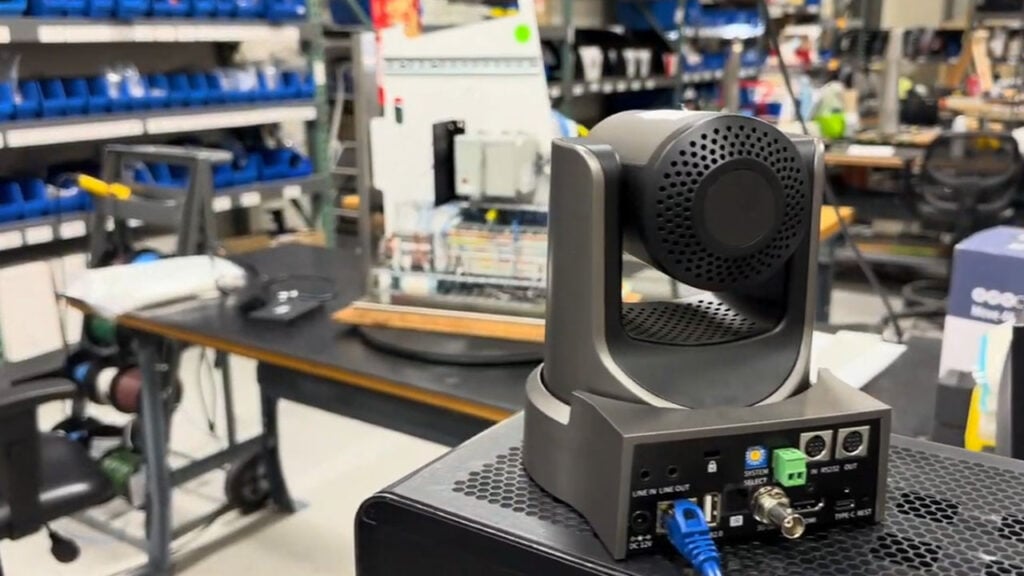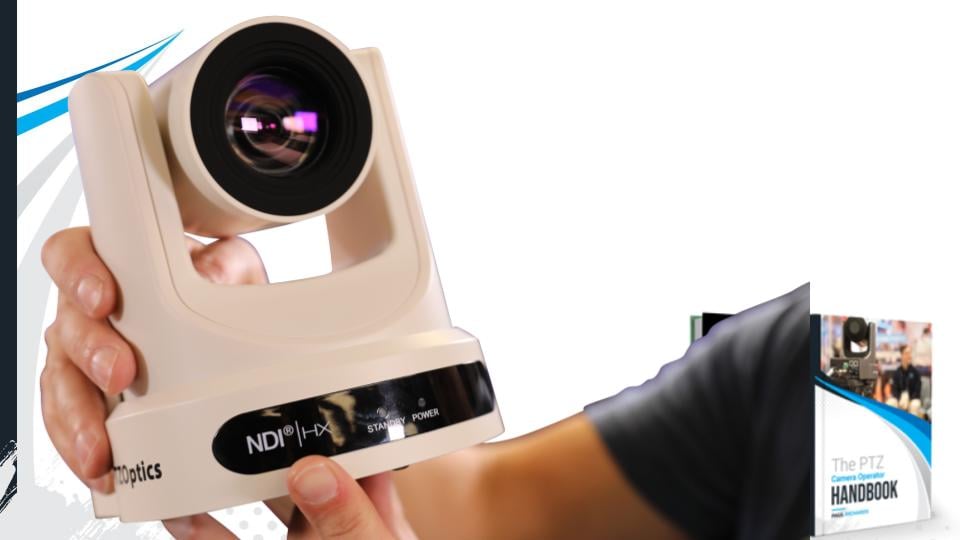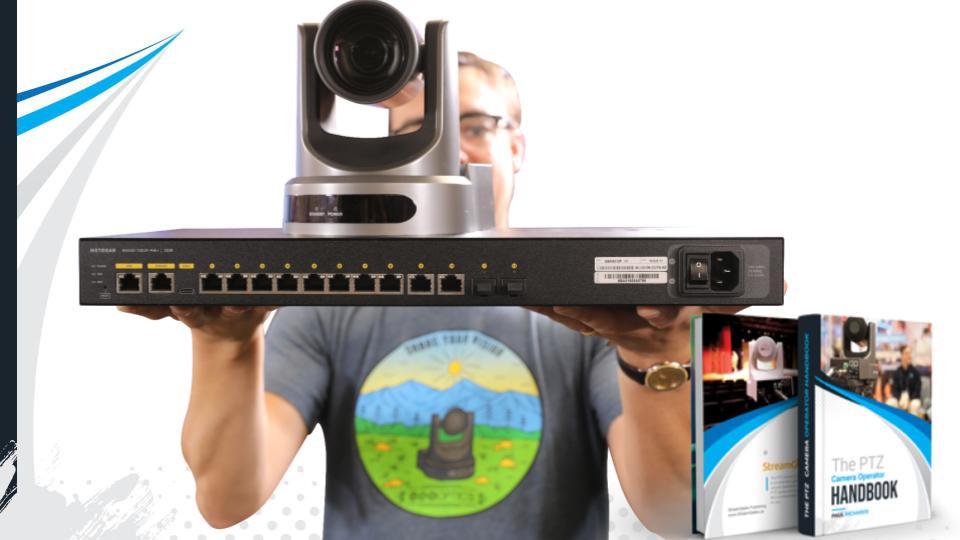Using Electronic PTZ Cameras
Written by Paul Richards on December 1, 2021
Electronic PTZ (ePTZ) uses the technology of digital zoom to provide PTZ-like features on a fixed (non-PTZ) camera. Digital zoom works by simply magnifying pixels to focus only on a portion of the entire camera image at any given time, and magnifying it to fill the entire frame. Since you are only viewing a portion of the image at any given time, you can now move that “area of interest” across the entire camera image for a pan and tilt effect without moving the camera head. So digital zoom not only allows you to ‘zoom’ in on an image, but also to move around within that image when zoomed.
What is ePTZ?
However, there are advantages and disadvantages to using digital zoom and ePTZ. The main disadvantage is that you are magnifying pixels to achieve digital zoom which results in reduced resolution. For example, a 4K video camera digitally zoomed in at 3x, results in a final video resolution of only 720p (a loss of total resolution of 88.9%). This is a significant reduction in resolution and image quality. Therefore, you need to consider your application and its needs before deciding whether ePTZ can work in your application, or you should invest in a true PTZ camera. One example would be if your streaming output or final file resolution is only going to be 720p. In that case, a 4K camera with ePTZ limited to 3x is sufficient, as a higher resolution is not required in the final product.
There is another intrinsic disadvantage to ePTZ. Looking at the 4K ePTZ camera example above(today’s practical limit for available, affordable cameras), a 3x zoom will take you down by 88.9% to 720p (as mentioned above). However, even if 720p is acceptable for your final product resolution, you are limited to only 3x zoom to remain at 720p or higher. With true PTZ technology, you can get cameras with an optical zoom range from 3x all the way up to 30x optical zoom, without reducing your final product resolution by a single pixel. Again, your specific application will dictate whether ePTZ will suffice.
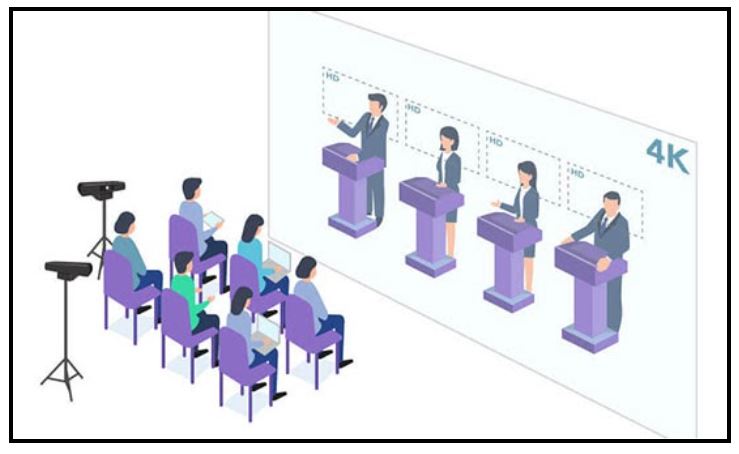
Electronic PTZ EPTZ example
Another disadvantage of ePTZ vs. true PTZ is the range of view. A true PTZ camera can often pan by as much as 340 degrees horizontally and offers tilt as much as 120 degrees vertically. This allows a single camera to cover a huge area of the local environment or “set”. An ePTZ camera, on the other hand, is limited to the field of view of its fixed lens and fixed camera head. This can typically range from 40 degrees to 110 degrees horizontally, with a common field of view being around 70 degrees (vs 340). Therefore you will need more ePTZ cameras to cover the same “set”. As with resolution, an evaluation of your specific needs will determine whether ePTZ or true PTZ is a suitable choice for your application.
Does ePTZ technology have any advantages?
It does have a few, so long as the above requirements are first met. An ePTZ camera has the ability to move instantaneously to a new shot via a called preset or a direct PTZ position command. This can be very useful for some applications and there is no wait for framing the new shot. With a true PTZ camera, you will have to wait for the mechanical motors to move to the new P, T, and Z positions. However, the disadvantage is that with most (if not all) modern ePTZ cameras, you simply cannot produce a panning, tilting, or zooming sequence without physically moving the camera through space. As ePTZ technology develops, we will likely see ePTZ panning, tilting, and zooming sequences become available to better emulate the capabilities of a true PTZ camera.
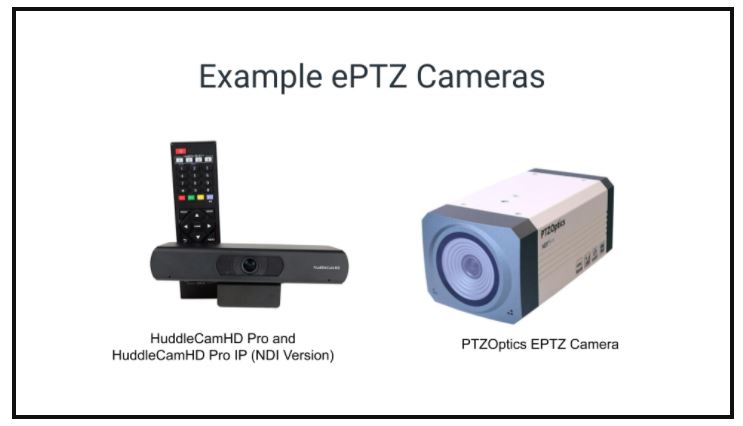
Example ePTZ Cameras
Two popular EPTZ cameras are the HuddleCamHD Pro and the PTZOptics EPTZ ZCam.
Some other advantages of ePTZ technology, if the above needs are first met, are size and cost. Without the need for mechanical pan, tilt, and zoom mechanisms, the size and cost of ePTZ cameras can be significantly lower than true PTZ cameras. This size and cost offset is typically greater than the cost of the higher resolution imaging chip required for a usable ePTZ experience (like 4k vs 1080p imaging chip), resulting in a lower overall camera cost. This cost reduction may be enough to offset the additional cost of a second or 3rd ePTZ camera to potentially address the ePTZ range of view issue mentioned above.
Understanding all the impacts of ePTZ vs. true PTZ and the specific needs of your application will help you make the right choice when deciding between ePTZ, true PTZ, or a combination of both technologies for your production.
Key Takeaways:
- ePTZ or Electronic Pan, Tilt, and Zoom cameras use digitally enhanced images with traditional PTZ camera controls.
- ePTZ cameras represent an opportunity to reduce the size and cost of some projects.
- ePTZ has unique applications that provide camera operators the ability to add camera movement to video without a moving camera.
Learn more about PTZ Cameras
- See how PTZ cameras are transforming video production here
- Learn high level, what a PTZ camera really is here
- Learn about every essential part of a PTZ camera here
- Learn about who is using PTZ cameras here
- Learn about the different types of PTZ cameras here
- Learn how to use an IR remote control with your PTZ cameras here
- Learn about the various PTZ camera control options here
- Learn how to mount a PTZ camera here
- Learn how to set the exposure of your PTZ camera here
- Learn about PTZ camera operation best practices here
- Learn about all the latest PTZ camera features here
- Learn how to automate PTZ camera controls here
- Learn more about Networking PTZ cameras here
- Learn about the new ePTZ camera technology here
- Learn about how innovations in video production are changing the industry here
- Learn how to use PTZ cameras for remote production here
